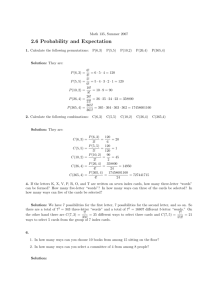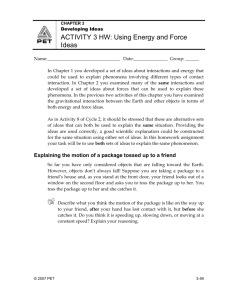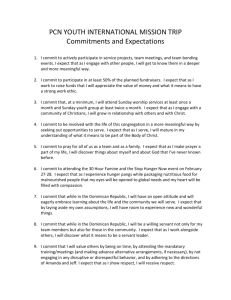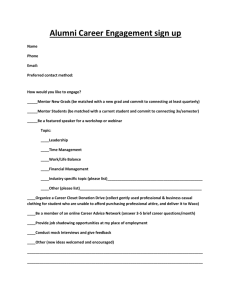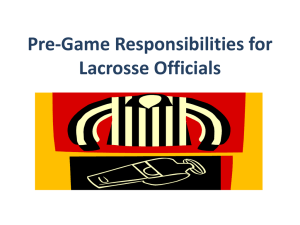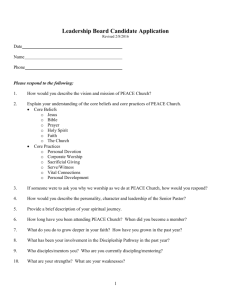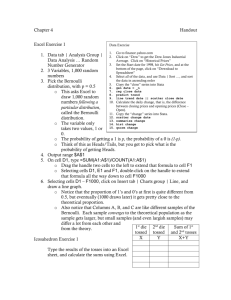Commit and Toss Formative Assessment
advertisement
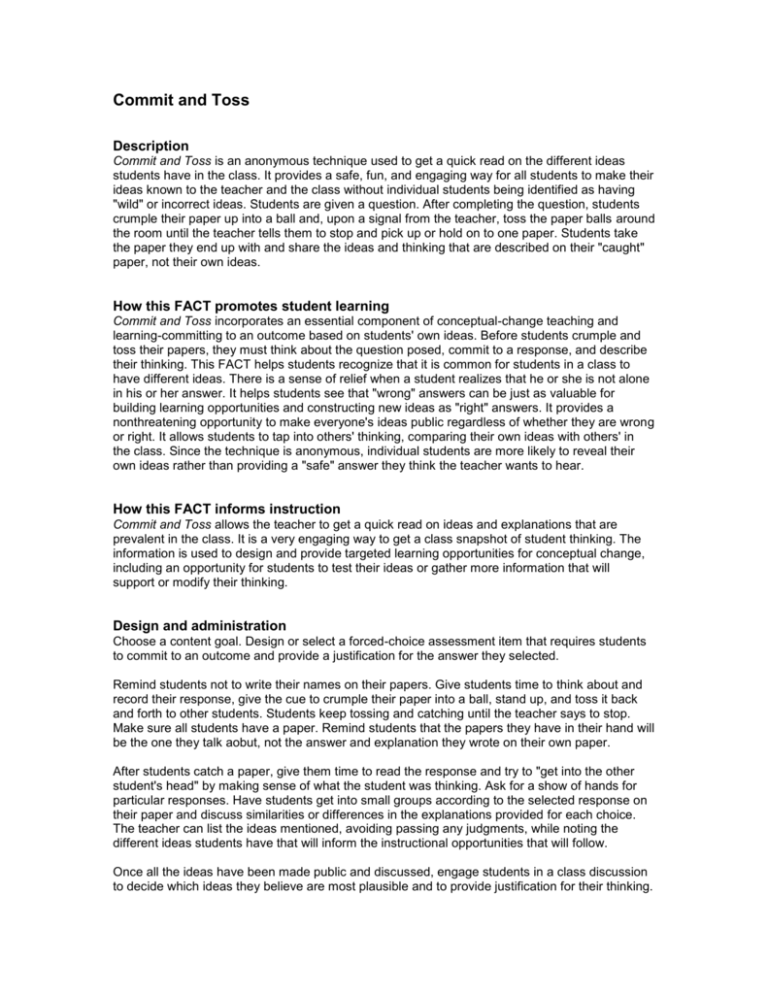
Commit and Toss Description Commit and Toss is an anonymous technique used to get a quick read on the different ideas students have in the class. It provides a safe, fun, and engaging way for all students to make their ideas known to the teacher and the class without individual students being identified as having "wild" or incorrect ideas. Students are given a question. After completing the question, students crumple their paper up into a ball and, upon a signal from the teacher, toss the paper balls around the room until the teacher tells them to stop and pick up or hold on to one paper. Students take the paper they end up with and share the ideas and thinking that are described on their "caught" paper, not their own ideas. How this FACT promotes student learning Commit and Toss incorporates an essential component of conceptual-change teaching and learning-committing to an outcome based on students' own ideas. Before students crumple and toss their papers, they must think about the question posed, commit to a response, and describe their thinking. This FACT helps students recognize that it is common for students in a class to have different ideas. There is a sense of relief when a student realizes that he or she is not alone in his or her answer. It helps students see that "wrong" answers can be just as valuable for building learning opportunities and constructing new ideas as "right" answers. It provides a nonthreatening opportunity to make everyone's ideas public regardless of whether they are wrong or right. It allows students to tap into others' thinking, comparing their own ideas with others' in the class. Since the technique is anonymous, individual students are more likely to reveal their own ideas rather than providing a "safe" answer they think the teacher wants to hear. How this FACT informs instruction Commit and Toss allows the teacher to get a quick read on ideas and explanations that are prevalent in the class. It is a very engaging way to get a class snapshot of student thinking. The information is used to design and provide targeted learning opportunities for conceptual change, including an opportunity for students to test their ideas or gather more information that will support or modify their thinking. Design and administration Choose a content goal. Design or select a forced-choice assessment item that requires students to commit to an outcome and provide a justification for the answer they selected. Remind students not to write their names on their papers. Give students time to think about and record their response, give the cue to crumple their paper into a ball, stand up, and toss it back and forth to other students. Students keep tossing and catching until the teacher says to stop. Make sure all students have a paper. Remind students that the papers they have in their hand will be the one they talk aobut, not the answer and explanation they wrote on their own paper. After students catch a paper, give them time to read the response and try to "get into the other student's head" by making sense of what the student was thinking. Ask for a show of hands for particular responses. Have students get into small groups according to the selected response on their paper and discuss similarities or differences in the explanations provided for each choice. The teacher can list the ideas mentioned, avoiding passing any judgments, while noting the different ideas students have that will inform the instructional opportunities that will follow. Once all the ideas have been made public and discussed, engage students in a class discussion to decide which ideas they believe are most plausible and to provide justification for their thinking. This is the time when they can share their own ideas. Following an opportunity to examine the class's thnking, ask for a show of hands indicating how many students are sticking to their original idea. With consensus from the class, select a few of the common ideas and have students decide in small groups or as a class how to go about investigating the question in order to determine the correct explanation. Provide opportunities for students to test or use other resources to research their ideas. Revisit these ideas again during the formal concept-development stage to help students build a bridge between their ideas and the explanation. Ask students to consider what else it would take to convince them of the explanation if they are still having doubts. General implementation attributes Ease of Use: High Time Demand: Low Cognitive Demand: Medium Modifications This FACT can be modified to fit a less rambunctious situation by adapting it to a "commit, fold, and pass" where students fold their paper in half and pass it around the room until the teacher gives the signal to stop passing. Caveats This is a fun, engaging technique- for this reason, be careful not to overuse it or it will lose its effectiveness. Remind students to honor anonymity, even if they recognize someone's handwriting. It is also important to establish the norm that disparaging or other types of negative comments should never be made about the student paper they end up with. Use in other disciplines This FACT can be used in all content areas. Keeley, Paige. (2008) Science Formative Assessment: 75 Practical Strategies for Linking Assessment, Instruction, and Learning. Thousand Oaks, CA: Corwin Press



